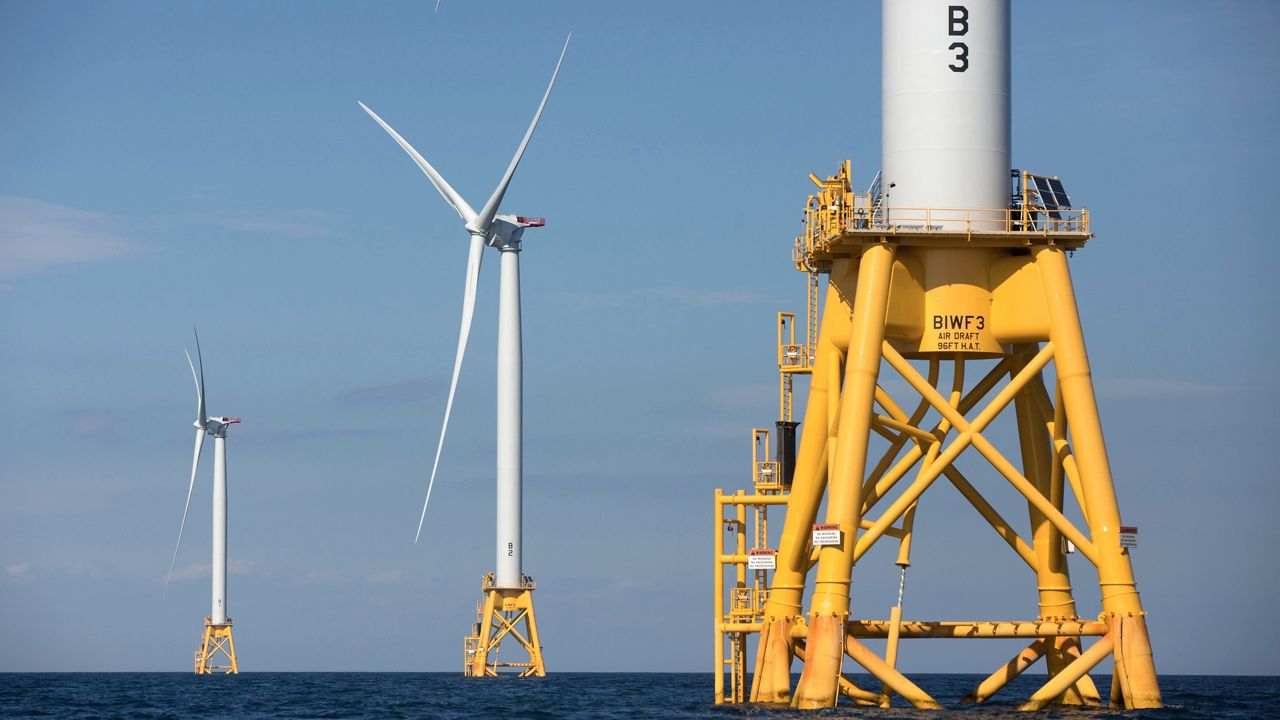A Duke Energy official called offshore wind a “core part” of the company’s goals to reduce carbon emissions.
A bipartisan 2021 law requires North Carolina’s energy producers to reduce carbon emissions 70% by 2030 and be carbon neutral by 2050. Duke Energy, North Carolina’s largest energy producer, and the state Utilities Commission continue to refine plans to hit the carbon reduction goals.
“We have 9 gigawatts of coal, and we need to replace that,” said Venu Ghanta, a vice president with Duke Energy. Three of the four plans the company submitted to the state to hit carbon reduction goals include offshore wind. “Offshore wind seems to be a core part of getting to 70% by 2030.”
Last year, Duke Energy secured a lease for a large swath off the southeastern North Carolina coast for an offshore wind farm. But the company has left open questions about what they will do with the lease and when.
Ghanta spoke Friday at a conference on offshore wind at Duke University.
Gov. Roy Cooper last year issued an executive order setting a goal of 2.8 gigawatts of offshore wind off North Carolina by the end of this decade and 8 gigawatts by 2040.
Offshore wind presents a “tremendous opportunity” for North Carolina, the governor said at the conference.
“In North Carolina, unfortunately, we’ve had a front-row seat in the devastation that climate change can bring,” Cooper said. “The need for reliable clean energy that offshore wind can produce has never been greater.”
Duke’s lease is for one of three areas in the ocean off North Carolina leased out by the Bureau of Ocean Energy Management for wind farms. All told, the leases could provide 4.8 gigawatts of electricity to North Carolina and Virginia.
On average, a nuclear power plant produces about 1 gigawatt of energy.
“For decades, North Carolina has resolved to stay on the cutting edge of global challenges,” Cooper said. “North Carolina is always ready for the next big thing. Now, it’s offshore wind.”
“Offshore wind is coming and we will continue to play a leading role in development and advanced manufacturing,” the governor said.
Offshore wind projects can take decades to plan and build. Most of the supply chain for the massive wind turbines is in Europe and Asia. A big part of the opportunity for North Carolina is to start building the parts for those turbines in the United States.
“The offshore wind industry and its supply chain represents a potential $100 billion in economic investments across North Carolina,” Cooper said.
The state will also need major upgrades to the electrical grid to get power from miles out in the ocean, on shore and into homes and businesses.
This week, North Carolina’s Department of Commerce signed an agreement with Denmark to learn more about that country’s successful offshore wind program.
“The knowledge, data and best practices accumulated by the Danish Energy Agency’s more than 30 years of offshore wind energy experience provides countless benefits to our state as we open opportunities with this growing industry,” Commerce Secretary Machelle Sanders said in a statement.
“As we work to responsibly develop North Carolina’s offshore wind industry, I value the expertise and new resources this partnership brings to my department and the people of North Carolina,” she said.
It will be up to the North Carolina Utilities Commission, Duke Energy and the other companies leasing offshore wind areas off North Carolina to figure out just what the burgeoning industry could mean for the state.
As Duke and other energy companies consider their plans for new wind farms, the Bureau of Ocean Energy Management is planning another round of offshore wind leases mid-Atlantic. Those new leases could be released next year, adding to the already-growing demand for a new offshore wind energy industry on the East Coast.



